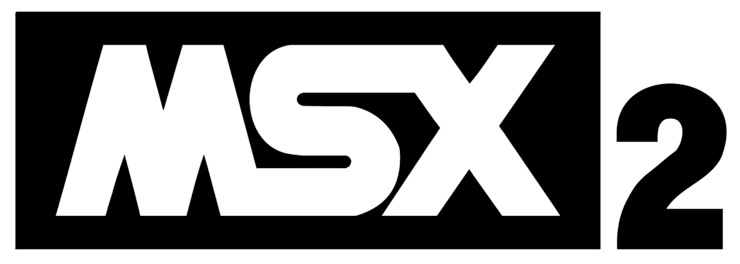Machines with Software eXchangeability 2 (MSX2)

Machines with Software eXchangeability 2 was the title of the benchmark for home computing in the 1980s. It was considered an attempt to create uniform stereotypes for the creators of hardware, initiated by the Japanese branch of Microsoft and Kazuhiko Nishi, who headed it at that time. The now well-known Japanese company ASCII Corporation, based Nishi together with Kazuya Watanabe, took part in the development of the standard on purpose for this purpose. Computers of the MSX standard gained great popularity in the Land of the Rising Sun and a number of other countries, however, not paying attention to the help of Microsoft, they practically did not gain popularity in the USA and Europe. In total, more than 7.5 million copies of MSX-compatible computers were sold in the world, of which 5 million were sold in the Land of the Rising Sun.
Nishi proposed the MSX stereotype as an aspiration to create the only industry benchmark for home computers. Inspired by the triumph of standardization in video recording (the VHS standard), almost all electronics manufacturers, including Goldstar, Philips and Spectravideo, developed and promoted MSX reference computers. Each instrument or software bearing the MSX logo was compatible with other manufacturers' MSX reference products. In particular, the stereotype outlined the format and performance of expansion cartridges, in fact, which allowed any expansion devices or game cartridges to work on any computer of the MSX standard.
Nishi's stereotype consisted in a key way of several knots already available. These are a Zilog Z80 microprocessor operating at a frequency of 3.58 MHz, a TMS9918 video controller from Texas Instruments with 16 KB of video memory, and an AY-3-8910 sound generator chip from General Instrument (GI). These components, together with Microsoft's MSX BASIC interpreter, created the MSX as a competitive stereotype, but also made the price of its proper computers quite high. The MSX stereotype strongly resembled the SV-328 home computer from Spectravideo, which already existed at that time, but this computer did not fully correspond to the MSX standard. After that, Spectravideo released the SV-728, which was already considered a normal MSX computer.
Prior to the advent and subsequent huge furore of Nintendo's Famicom game console, MSX computers were the leading business platform for more popular Japanese video game companies such as Konami and Hudson Soft. These game series like Metal Gear, Bomberman and Valis started with games that were first released on MSX computers.
Specifications:
- Processor: Zilog Z80A, clocked at 3.58 MHz
- ROM: 48 KB
BIOS + Extended BIOS (32 KB)
MSX BASIC V2.0 (16 KB)
DiskROM (16 KB) (optional)
MSX-Audio BIOS (32 KB) (optional) - RAM: 128 KB typical (64 KB on Japanese models; Sony HB-F700P had 256 KB)
The memory manager maintains 4 MB of address space for each of the 4 slots (RAM, ROM, etc.) - Video controller: Yamaha V9938 (also known as MSX-Video)
Video RAM: 128 KB (sometimes 64 KB or 192 KB)
Text modes: 80 × 24, 40 x 24, and 32 x 24 characters
Graphics modes: 512 x 212 (16 colors) from palette 512) and 256 x 212 (256 colors)
Sprites: 32, 16 colors, up to 8 sprites per line of the image
Hardware acceleration for copying, filling, line drawing, etc.
Possibility of doubling the vertical resolution due to line interleaving
Case vertical scroll - Sound generator chip: Yamaha YM2149 (PSG)
3 channels + noise - Real time clock chip RP5C01